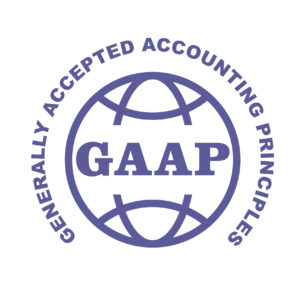Do you ever feel like there are just not enough hours in the day? Managing multiple clients, meeting tight deadlines, and maintaining accuracy are essential to your role as an accountant, but they can also lead to stress and burnout. Fortunately, with the right strategies and technology, you can control your time and streamline your workflow.
This guide explores practical time management strategies to help you work smarter, prioritize effectively, and achieve a better work-life balance. These tips will optimize your daily tasks, giving you more time to focus on what matters most.
Time Management Fundamentals
Let’s face it: effective time management is crucial for your success. When you are organized and efficient, you can:
• Increase your productivity: Get more done in less time, meaning fewer late nights and more time for what matters.
• Reduce stress: Feeling overwhelmed by your workload is a recipe for burnout. Time management helps you stay organized and maintain a sense of control.
• Improve accuracy: Rushing through tasks can lead to mistakes. Effective time management allows you to dedicate the necessary time and focus to each task, ensuring accuracy.
• Enhance client satisfaction: Meeting deadlines and delivering high-quality work strengthens client relationships.
Now, here are the likely culprits stealing your precious time:
• Interruptions: Constant phone calls, emails, and unscheduled meetings can disrupt your workflow and derail your focus.
• Multitasking: While it may seem like you are getting more done, multitasking often leads to decreased efficiency and increased errors. Your brain can only truly focus on one task at a time.
• Procrastination: Putting off important tasks until the last minute adds unnecessary stress and limits your ability to deliver high-quality work on time.
• Disorganized workflow: A messy workflow without a clear way to manage tasks and data can waste time as you hunt for documents and important info.
To combat these time wasters, we need a solid foundation. Enter SMART goals. SMART stands for Specific, Measurable, Achievable, Relevant, and Time-bound. Applying this framework to your goals ensures they are clear, focused, and achievable, keeping you motivated and on track.
Practical Strategies for Maximizing Time
Planning and prioritization are the cornerstones of effective time management. Here are some actionable steps:
Daily To-Do Lists
Start your day by creating a to-do list and prioritizing tasks based on urgency and importance. This helps you stay focused and avoid feeling overwhelmed.
Weekly Planning
Dedicate some time each week to planning for upcoming deadlines, meetings, and client deliverables. This will enable you to anticipate challenges and proactively manage your workload.
Utilize Calendars Effectively
Treat your calendar like your bible. Schedule appointments and deadlines and even block out time for focused work sessions. This helps you visualize your week and avoid overbooking yourself.
Batching Strategy
Batching similar tasks is another powerful strategy. Instead of switching between different tasks throughout the day, group similar tasks together (e.g., returning phone calls and responding to emails). This minimizes context switching and allows you to enter a focused flow state, increasing your efficiency.
The Two-Minute Rule
Many successful accountants swear by the “two-minute rule”: If a task can be completed in two minutes or less, tackle it immediately instead of adding it to your to-do list. This helps clear your mental space and prevents small tasks from accumulating and becoming overwhelming.
Technology
Technology is your friend! Leverage the power of new tech tools like:
• Project Management Software: Platforms like Asana or Trello can help you organize tasks, assign deadlines, and collaborate with colleagues, keeping everyone on the same page.
• Time Tracking Software: Tools like My Hours or Harvest allow you to track the time spent on different tasks. This data can be used for analysis and billing purposes, helping you identify areas for improvement.
• Automation Tools: Many platforms offer features like automatic reminders, email scheduling, and data entry automation. Utilize these features to free up your time to focus on more strategic aspects of your work.
Maintaining a Healthy Work-Life Balance
Achieving a healthy work-life balance, especially in the demanding world of accounting, can feel like an uphill battle. But what if you could find harmony amidst the chaos?
First, draw a firm line between your professional and personal life. Stick to designated work hours daily and weekly, and resist checking emails or answering calls outside those times. Also, remember your vacation time exists for a reason – use it!
Second, short breaks throughout the day are essential to avoid burnout. Step away from your desk, stretch your legs, or grab a coffee. Even a few minutes can help you refocus and return to your tasks with renewed energy.
Third, do not hesitate to delegate tasks to colleagues or a bookkeeper. This will free up your time to focus on higher-priority tasks requiring your specialized expertise and prevent you from feeling overwhelmed by the workload.
Finally, learning to decline additional work when your workload reaches its limit is important. Taking care of yourself is non-negotiable.
Closing Remarks
Time management is a journey, not a sprint. Experiment with the above strategies, find what works best for you, and adapt them to your workflow and preferences. By implementing new hacks, you can reclaim control of your time, achieve your goals, and be able to thrive professionally and personally.
Additional Resources
Want to delve deeper into time management mastery? Explore the wealth of online resources specifically tailored to accountants! Here are a few examples to get you started:
1. Webinar: “The Time Management Toolkit for Busy Accountants” Get practical strategies for organization and leveraging technology to boost efficiency.
2. Course: “Time Management for Professionals” by Udemy. This course covers goal setting, time tracking, and creating effective workflows.
3. Podcasts: “The Accounting Podcast” by David Leary and Blake Oliver. This popular podcast features interviews with accounting professionals who share their insights and tips on managing their time and workload effectively.
How FINSYNC Can Help
There are 3 primary ways FINSYNC helps business owners. (1) CO.STARTERS courses through FINSYNC can help turn your business idea or side hustle into a thriving business. (2) On our website, you can also apply for a business bank account. (3) In addition, the FINSYNC software allows you to run your business on One Platform – invoice customers, pay bills, process payroll, automate accounting, and manage cash flow. To learn more about how we can help your business start, scale, and succeed, contact us today.












